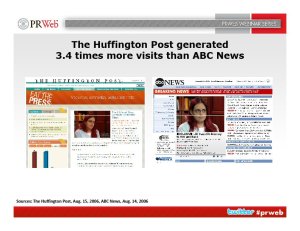 Bom dia my friend. Today I want to seseseses you about the “Public Relations” aspect of social media and social networking.
Bom dia my friend. Today I want to seseseses you about the “Public Relations” aspect of social media and social networking.
As I have written in past posts, social media falls under the marketing category of “Public Relations”. In my book “How to Market Tourism in the 21st Century” (shameless plug), I define Public Relations as “the development of social, political and market capital through third party endorsements.” I believe few other marketing tools are better equipped to accomplish this task than Social Media and Social Networking.
The direction of this post is concentrated on developing “hooks” in your writing whether it be blogs or tweets or a press releases.
Public Relations does not refer to one “public” but to at least seven:
- Media relations
- Employee relations
- Community relations
- Educator relations
- Consumer relations
- Stakeholder relations
- Management relations
Let’s start this series of blogs by talking about media relations.
The rise of the Internet, and in particular the rise of “search” has effected all seven “publics” but perhaps none more than media relations. (It is strange that media has effected media). This is happening while traditional media is in serious decline. In the following few paragraphs I will be using a couple of slides from an excellent Webinar from PRWeb.
I am going to quote from an excellent article about hooks by Pam Lontos regarding how can you differentiate yourself from your competitors in troubled economic times?
The best way, Pam claims, to attract more clients and customers is to create a level of celebrity for your brand that only the media can bring, and because today’s media are more fragmented than ever before, you will need to reach out via many different platforms.
While each media do things a bit differently and cover different topics, one thing will remain consistent when it comes to you getting coverage: The hook.
Even though one publication may appeal to a narrow audience, or an Internet news site may focus on a single topic, or a radio talk show treat just one subject line – even with that reality, you can still appeal to them all if you have a great hook.
What is a hook? It’s the angle, the concept that can be boiled down to a few words that make the reader or listener tingle with anticipation about what comes next. In a way, your hook is the bait, like a headline that makes someone want to read the whole story.
You may adapt your hook when moving from one medium to the next, but its core essence will remain the same. Suppose, for instance, your expertise is in helping business and organization leaders produce better results through a focused, fired-up and capably led workforce.
For a press release about why business leaders should consider corporate culture and employees’ perspectives during mergers and acquisitions, the merger of Northwest and Delta became the hook. The release was successfully pitched as “Why Delta/Northwest Merger is a Bad Idea.” This hook resulted in two interviews with major city newspapers according to Pam Lontos .
But that same hook could also be used to approach a syndicated how-to columnist or a general-interest magazine editor with a more consumer-oriented twist on the idea, such as “How to Reduce Your Pink-Slip Chances When Your Company Merges.” Or you could write a feature or op-ed article such as “The Delta/Northwest Merger: What They Didn’t See Coming.”
You can get a lot of mileage from a single hook. Just remember to keep your hook angled to what the media are looking for. (End of Pam’s excellent article).
I have used hooks for many key promotions over the years. Let’s face it, most products are basically boring, except to their owners, it’s the hook that makes it interesting. Sometimes I feel I should buy a stamp that says “boring” and bang it down on silly, boring products. The hook is what makes it sizzle.
The product when presented to the media either over the Internet or by old-time press releases needs to be presented with the angle of a hook.
Back in the day I had to promote the opening of a beautiful night club called “Darlings” at a Four Seasons Hotel. Now you would think that just letting the press know that a new night club was opening, especially at a Four Seasons Hotel, would bring the press out. Well, possibly but the article would come out after the event and the opening is what creates biz buzz. Also, there were two other clubs opening almost at the same time hence diluting our story. What would our hook be?
Our hook was a pre-opening promotion playing on the name of the club “Darlings” that generated a lot of “buzz” and press all by itself.
Three months prior to opening we created two mailing lists; first list consisted of upwardly mobile young men; the second, of upwardly mobile young women.
After creating the two lists we mailed what looked like hand written little notes (they were actually printed) to each sex, saying “I miss you Darling” and the next, “I want you Darling” and the next; “Meet me Darling”. The final mailing was a beautiful invitation that said “Meet Me Tuesday Night for the opening of “Darlings”.
We didn’t have to generate press, the public flooded the post office to find out who was mailing these notes. Couples threatened to sue if they found out. Headlines read “Public Want’s to Know Who is Sending Love Notes?”
There were 2,700 people lined up to get into the Darlings night club on opening night (club only would hold 500). It was the hook that created the press and the buzz.
More on PR and Social Media next week. Thanks for reading the blog and please leave a comment of any great “hook” stories you might have.



Il “sesesesese”è davvero molto esplicativo!!
Io non credo che le cose scritte nel blog possano essere considerate un semplice”pour parler” come l’espressione usata per aprire la discussione suggerisce.Argomenti molto importanti sono stati affrontati e nuove conoscenze ne derivano.Molto piacevole la lettura.
I enjoyed reading on your website , it’s filled of great information. You have found one perennial visitor and a fan of your blog.